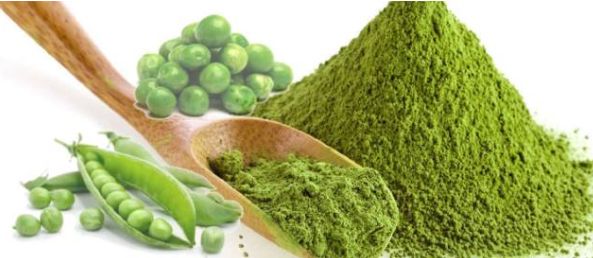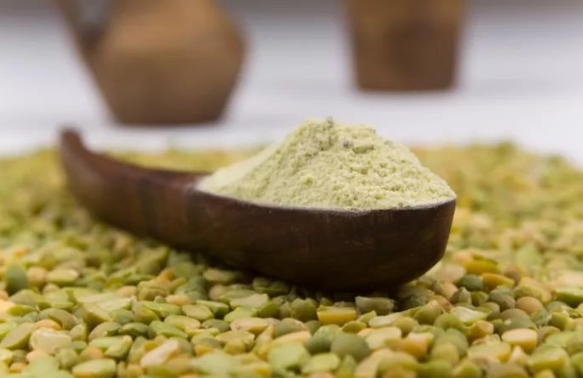The rise of plant-based proteins, including soy, rice and other plant-based proteins, has been a major trend in the food and beverage industry over the past few years. More recently, pea protein has begun to rapidly surpass other plant-based proteins in popularity as a popular ingredient. The driving factors behind this may include the development of plant-based food and beverage brands, such as the success of Ripple Foods, and the optimistic market performance of Beyond Meat, a veggie burger that uses pea protein. In such a dynamic market, what are the innovative forces behind the rise of pea protein, and what are the future opportunities and challenges in this field?

From Ripple Foods to Bolthouse Farms, the pea protein market is in full swing
According to Global Market Insights, the global pea protein market is expected to grow at an annual rate of 13.5% until 2023 due to its nutritional value and sustainability as a crop.
Foodaily has also introduced some innovative products and successes of the Ripple Foods brand in many previous reports. Ripple Foods was the first company to develop products using pea protein, and its early commercial success opened the door to a boom in pea protein drinks.
Since launching its pea protein drink in 2014, Ripple Foods has used patented technology to not only deliver a product with a high protein content, but also reduce the dry taste inherent in ingredients. Ripple Foods has raised more than $44 million in funding from Silicon Valley investors such as Google, and has expanded from the natural food channel into traditional retail channels like Target. According to Bloomberg, Ripple has sold 2.5 million bottles of the product and earned more than $20 million in revenue.
With milk sales expected to continue to decline, other brands are also eyeing the rapidly growing market. In September, Campbell Soup subsidiary Bolthouse Farms announced the launch of a plant-based milk with 10g of pea protein per serving. CytoSport, the company that launched Muscle Milk based on whey protein, has now shifted its research direction to the plant-based field with the launch of a new line of ready-to-drink milkshakes and instant powders made from pea protein.
In the food industry, pea protein has become a core ingredient in brands pivoting toward meat-free products. In July, Beyond Meat rolled out its pea protein-based Beyond Burger to more than 600 Kroger supermarkets.
Food ingredient manufacturers are eager to continue expanding pea protein production. In September, French company Roquette celebrated the start-up of a new pea protein plant in Canada, with an expected processing capacity of more than 120,000 tonnes per year. The company’s CEO Jean-Marc Gilson said that this is an important step in Roquette’s North American and plant protein business development strategy.
Technological innovation drives pea protein market to maturity
To move pea protein from the fringes to the mainstream, suppliers must first address several key challenges associated with their applications.
First, improving the dispersibility of pea protein products is a constant theme. Glanbia Nutritionals has introduced BevEdge, a particle dispersion technology that instantly dissolves pea protein. Linda Wilson, senior director of product management at Glanbia, explained that customers are increasingly looking for fast-dissolving solutions, especially in the beverage industry, where undissolved protein residues can contribute to a gritty mouthfeel. BevEdge embodies the requirements for the ease of use of the product, it will not cause agglomeration when used, and it is simple and convenient, which is the key to solving the problem.
Improving the dispersion of pea protein can be traced back to the front end of the supply chain, where suppliers need to consider where and how to source their crop raw materials, mainly yellow peas. Plant raw materials are easily affected when they come into contact with oils or certain enzymes, which can cause adverse reactions when the protein is extracted, making harvesting, transportation and storage processes all the more important.
Richard Ray, sales manager and brewing science expert at Axiom Foods, a leader in Canadian plant-based protein ingredients, said, “Every step is now a matter of caution, even water is a big deal. He applauds the Food Safety Modernization Act for pushing suppliers and farmers closer together. Closer cooperation and greater accountability between farmers, which gives farmers a stronger position in communicating with suppliers. In the past, “nearly close” was enough. Now, because consumers are more demanding, We have more motivation to do our job better. We understand chemistry much better now than we used to, which explains why we do it, how we do it, and enables us to achieve There has been some progress. As we’ve learned over the years, you have to go further down the supply chain to really manage the product.”
As with all food ingredients, mouthfeel and flavor remain the primary indicators of success. In the case of pea protein, the goal is to achieve as neutral a flavor as possible, reducing the need for flavoring and masking agents. Producers will need to develop within parameters that maintain clean ingredient properties and non-GMO production requirements, and this will be a very difficult process.
Maggie Harding, sales manager at The Scoular, a supplier of pea protein with an 85% market share, agrees: “Taste is a big issue for the industry. Pea milk, an upcoming beverage, needs some more clean-label, Clean ingredients to go with it. Consumers like simpler labels, so getting simple ingredients and satisfying taste is probably the biggest challenge.”
The keys to the future of pea protein: flavor improvement, quality assurance and by-product handling
This has sparked a flurry of positive feedback from the food industry as pea protein suppliers are able to improve the taste of their ingredients.
Axiom reduced its reliance on flavorings and masking agents when developing pea protein, which allows food manufacturers to use fewer additives and lower product costs. In addition to adjusting thickness and other physical properties, pea protein can also be used as a substitute for stabilizers in beverages or, like the company’s Vegotein MA, as a meaty mouthfeel enhancer.

Still, Solvay, which supplies pea protein producers with vanillin as a flavor-masking agent, sees great promise for the ingredient to develop alongside pea protein. Edouard Janssen, vice president and general manager of the company’s North American and Latin American flavors business, said flavor will become a bigger issue as ingredient producers refine plant-based proteins to higher levels of purity. As pea protein moves from niche fitness products into mainstream packaged foods, consumers will be reluctant to compromise on taste. The range of applications for pea protein is constantly expanding and we need to adapt our products to achieve the quality expected in the market. The new challenge for us was to grade these pea proteins and improve their taste according to the different grades. ”
Jean-Pierre Cuif, global business manager of Solvay’s fragrance business, said, “We have been told by many companies that these odors are limiting their business growth. We provide solutions that allow them to achieve more growth potential. To help mask the Certain off-flavors, and to create an overall more neutral taste, Solvay can offer pea protein suppliers free use of its vanillin products, the goal of which is to provide pea protein products with a more harmonious, near-authentic flavor profile, rather than those that do not. liked flavors, so that flavors can also be applied more directly to the final product.”
The importance of health and safety certification for pea protein is rising as large CPG companies begin to roll out pea protein-based products. Kay Abadee, vice president of marketing at Axiom, pointed out that many large companies are looking for pea proteins that are generally recognized as safe (GRAS) by the US FDA. When it comes to organic certification, the demand is not yet particularly pronounced, and while Glanbia, Axiom, Nutria, and others all offer organic pea varieties, the time and expense required to upgrade conventional farms to organic is significant, meaning that The final product price is much higher than the original.
There are very few organic peas on the market, and the price of organic pea protein will be more than double that of regular products. However, as demand continues to grow, farmers will grow more organic peas. However, this may also raise some other issues.
Abadee noted that the high demand for organic pea protein from producers has rised questions about the legality of certification. “That’s one of the things we worry about, we know how much organic farming costs, so how do you sell organic produce at a low price? Farmers have to grow organic peas for three years before they can get certified, so they have to bear the cost, But there is no source of fees. Where are the benefits of switching while they are using the money? How can the raw material suppliers provide organic products at the same or similar cost as before? In fact, if they want to guarantee that the peas are organic, it is difficult for them to continue to operate or make a profit.”
On the other hand, organic pea protein has become a growing profit point for Glanbia in this area, and interest from some major customer brands is particularly noteworthy. “I would expect the ratio to be maybe one-third organic and two-thirds regular. That ratio may change in the future, but both will be on growth trajectory,” said Glanbia’s Wilson.
Whether natural or organic, producing pea protein that meets market demand is a challenge for suppliers in the field. Another big question is what to do with a lot of by-products? For example, in the case of pea starch produced during protein extraction, what to do with these by-products must also be considered before increasing yields.
Axiom is considering shifting primary processing of peas to the Asian market, as pea starch is a common ingredient in noodles. Developing new uses for by-products could be one of the keys to cracking the pea protein production woes.
